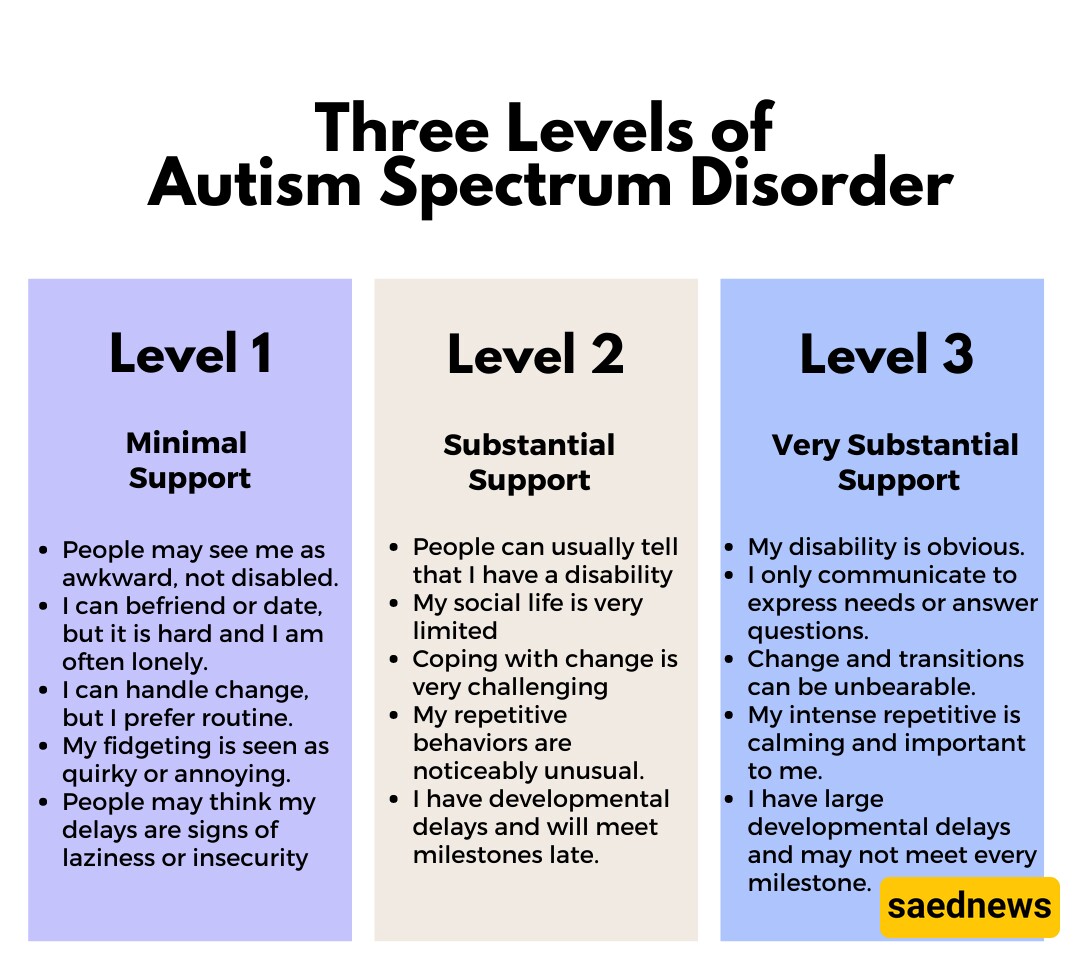SAEDNEWS; Autism Spectrum Disorder (ASD) is becoming more widely recognized as understanding of developmental problems grows.

According to SAEDNEWS, many parents today question if their children's behaviors show indicators of autism. Early discovery can have a huge impact on a child's development, as early intervention frequently results in better outcomes.
But how will you know where to start? While a complete diagnosis needs a professional examination, there are some basic observations and tests you may do at home to help identify early warning signs. These exams are not conclusive, but they can give useful insights and direct parents to seek additional expert examinations.
Autism Spectrum Disorder (ASD) is a neurodevelopmental disorder that impairs speech, social interaction, and behavior. The word "spectrum" is used since the symptoms and their severity can differ greatly from one child to another. Autism symptoms may include:
Difficulties communicating verbally and nonverbally, as well as a lack of interest in social engagement and making connections.
Repetitive actions or motions, such as hand flapping, spinning, or rocking.
A strong emphasis on certain hobbies or habits.
Sensory sensitivities, such feeling overwhelmed by lights, noises, or textures.
Autism symptoms commonly occur in early childhood, before the age of three. However, each kid grows at their own speed, making it difficult for parents to identify what is normal and what may require further attention.
Why is early detection of autism so important? Research indicates that early intervention can dramatically enhance a child's communication, conduct, and social skills. It enables parents, teachers, and experts to collaborate to develop support solutions specific to the child's needs.
Early detection also helps to relieve frustration for both the kid and the family. When children get developmentally appropriate assistance, they are better prepared to face problems and attain their full potential.
Before administering any test, it is important to carefully monitor your child's behavior. Here are some indicators that may indicate autism:
1. Lack of Eye Contact: Does your youngster avoid establishing eye contact when speaking or playing with you?
2. Delayed Speech Development By 18 months, most youngsters can talk in basic words. If your child isn't babbling, speaking in single words, or constructing brief sentences, it might be a clue.
3. Unusual Reactions to Sensory Stimuli: Does your youngster cover their ears to typical sounds or become overwhelmed by specific lights or textures?
4. Limited Social Interaction - Is your child uninterested in playing with other children or engaging in group activities?
5. Repetitive Movements or Behaviors - Keep an eye out for behaviors such as hand flapping, toe-walking, and excessively arranging items.
6. Strong emphasis on routines - Do your children become angry when routines are broken, such as a missed bedtime story or a change in breakfast schedule?

These indications do not necessarily indicate that your kid has autism, but they are markers that should be taken seriously.
The Modified Checklist for autistic in Toddlers (M-CHAT) is a frequently used instrument for screening for autistic symptoms. While the official M-CHAT has more questions and professional assistance, here's a simplified version to try at home.
Instructions: Spend a few days observing your kid in their natural surroundings, paying close attention to their interactions, play, and responses to stimuli. Respond to each question with "Yes" or "No" depending on your observations.
1. Does your youngster point to objects or items they want? Example: Do they gesture to a toy that is out of reach?
2. Does your youngster answer when you call their name? Example: Say their name while they are playing. Do they turn their heads or stare at you?
3. Does your youngster appreciate playing peek-a-boo and other interactive games? For example, are they excited or engaged when you conceal and reappear?
4. Does your youngster make eye contact when playing or talking? Example: Maintain eye contact when singing, reading, or conversing with others.
5. Does your youngster mimic activities or behavior? - For example, do they imitate clapping hands, waving, or making funny faces?
6. Does your youngster express interest in other children or attempt to play with them? - Observe how they interact with siblings, cousins, or other children in the park.
7. Does your youngster make motions such as waving goodbye or reaching out to be taken up?Example: Do they wave without prompting?
8. Does your kid like pretend play, such as feeding dolls or operating toy cars? As an example, observe their ingenuity during playing.
9. Does your child become abnormally agitated when their routine or surroundings changes? A sudden change in routine or shifting furnishings may cause discomfort.
10. Does your kid exhibit repetitive actions such as spinning, flapping hands, or arranging toys? look for repetitive gestures or routines.
How to Evaluate the Results: - If you replied "No" to three or more of these questions, particularly those related to social interaction, communication, or repetitive habits, consult with a pediatrician or child development expert.
If the findings of this test cause you concern, don't panic. The next step is to consult with an expert, such as: Consult a pediatrician, family doctor, child psychologist, or developmental expert. They will do a more complete review, utilizing standardized methods and professional experience. This procedure may include observations, interviews, and developmental evaluations.

If your kid is diagnosed with autism, remember that there is help available. Early intervention programs, speech therapy, occupational therapy, and behavioral methods can all help youngsters develop necessary abilities. Most essential, remember that autism is not a restriction, but rather a unique way of viewing the world. With love, patience, and support, children on the autism spectrum may flourish and enjoy full lives.
Understanding if your child is on the autistic spectrum begins with awareness and observation. While this basic test cannot replace a professional examination, it can be a good beginning point for identifying potential symptoms. Autism, when identified early, allows for tailored assistance and intervention, allowing children to thrive in their own unique ways. As parents and caregivers, our responsibility is to observe, comprehend, and seek assistance when necessary, ensuring that every kid has the opportunity to shine. If you are concerned about your child's growth, take action now. A simple move may make a big impact on their road to growth, happiness, and success.

